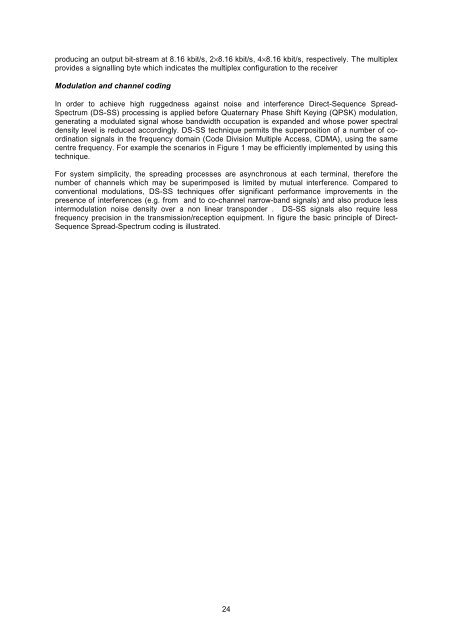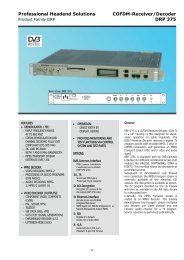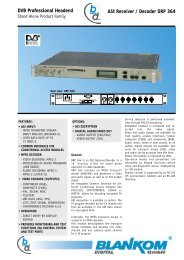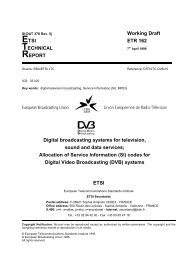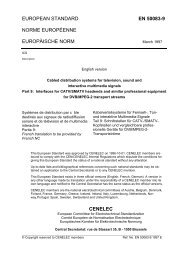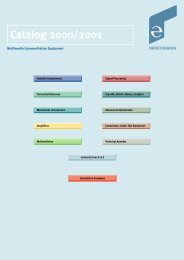Digital Video Broadcasting (DVB); User guidelines for Digital ...
Digital Video Broadcasting (DVB); User guidelines for Digital ...
Digital Video Broadcasting (DVB); User guidelines for Digital ...
You also want an ePaper? Increase the reach of your titles
YUMPU automatically turns print PDFs into web optimized ePapers that Google loves.
producing an output bit-stream at 8.16 kbit/s, 2×8.16 kbit/s, 4×8.16 kbit/s, respectively. The multiplex<br />
provides a signalling byte which indicates the multiplex configuration to the receiver<br />
Modulation and channel coding<br />
In order to achieve high ruggedness against noise and interference Direct-Sequence Spread-<br />
Spectrum (DS-SS) processing is applied be<strong>for</strong>e Quaternary Phase Shift Keying (QPSK) modulation,<br />
generating a modulated signal whose bandwidth occupation is expanded and whose power spectral<br />
density level is reduced accordingly. DS-SS technique permits the superposition of a number of coordination<br />
signals in the frequency domain (Code Division Multiple Access, CDMA), using the same<br />
centre frequency. For example the scenarios in Figure 1 may be efficiently implemented by using this<br />
technique.<br />
For system simplicity, the spreading processes are asynchronous at each terminal, there<strong>for</strong>e the<br />
number of channels which may be superimposed is limited by mutual interference. Compared to<br />
conventional modulations, DS-SS techniques offer significant per<strong>for</strong>mance improvements in the<br />
presence of interferences (e.g. from and to co-channel narrow-band signals) and also produce less<br />
intermodulation noise density over a non linear transponder . DS-SS signals also require less<br />
frequency precision in the transmission/reception equipment. In figure the basic principle of Direct-<br />
Sequence Spread-Spectrum coding is illustrated.<br />
24


